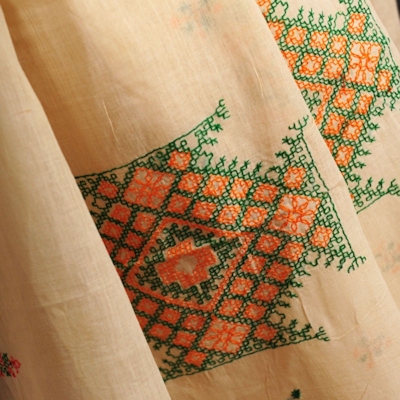
This form of embroidery has a special significance in northern Karnataka, and was traditionally found on saris worn by the bride in certain communities. Motifs generally include kolam or rangoli designs and palanquins.
There are so many traditional kasuti embroidery patterns, although there are a number of common themes or motifs. Lotus flowers (center) are widely used, as are other flowers, animals, shells and plenty of borders. Many are inspired by temples in the Karnatak region.
Like blackwork or other counted thread techniques, kasuti embroidery designs are worked on a grid. Although the patterns shown above are not pictured on a grid, they still are more like a chart and will work on aida or other evenweave fabric.
Download the kasuti pattern JPG and print it out for reference or to transfer the designs. Use the motifs individually or repeat the elements.
If you are using Aida cloth, each straight line on the pattern represents one square. If you are using an evenweave fabric, decide how many threads to count for each straight stitch. You can easily adjust the size of the pattern by changing the number of threads you count for each stitch.
If you want to use regular linen or quilting cotton, you can either use waste canvas to create the grid on the fabric or treat this as any other embroidery pattern and mark the design directly on the fabric and stitch over it. Use the motifs individually or repeat the elements.
Credit : The Spruce Crafts
Picture Credit : Google



